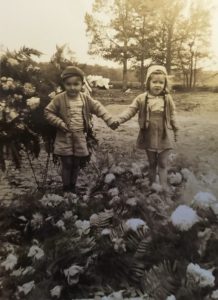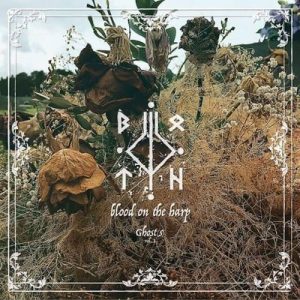 It’s Halloween. FEST 16 just painted my downtown black with underground musicians and punk rock fans. And I’m 200 miles south of Flannery O’Connor’s childhood home. So I’m thinking about Southern Gothic, ghosts, and graveyards today. Some folks don’t believe in ghosts. Some believe the ghosts come home on All Hallows’ Eve. If you grew up in the Southeastern U.S., you know that ghosts are always with us. There are pictures of people in graveyards boxed up in your parents’ attic, or in yellowed photo albums with brittle pages. As a child you, too, may have
It’s Halloween. FEST 16 just painted my downtown black with underground musicians and punk rock fans. And I’m 200 miles south of Flannery O’Connor’s childhood home. So I’m thinking about Southern Gothic, ghosts, and graveyards today. Some folks don’t believe in ghosts. Some believe the ghosts come home on All Hallows’ Eve. If you grew up in the Southeastern U.S., you know that ghosts are always with us. There are pictures of people in graveyards boxed up in your parents’ attic, or in yellowed photo albums with brittle pages. As a child you, too, may have  stiffened at the picture of a coffined forebear your cousins pulled out of grandma’s parlor cabinet. You find these family photographs–or they find you.
stiffened at the picture of a coffined forebear your cousins pulled out of grandma’s parlor cabinet. You find these family photographs–or they find you.
O’Connor tells us that ghosts can be very fierce and instructive in casting their strange shadows on us. I find that once you’ve grown accustomed to them, the ghostly images of inherited photographs aren’t so creepy after all. Why wouldn’t a great-grandmother and her friend memorialize their youthful outing to the cemetery? And why wouldn’t forebears appear as toddlers in a graveyard, holding hands amidst the funeral flowers? Rooted in customs of family grave tending, these faded images are at home in our homes, after all.
 Over time my family dispersed more widely, migrating across or beyond the Southeast. Family photography has become digital–migrating across cyberspace. Where do we find something akin to the rootedness of graveyard photography? I find it in roots music laden with ghosts: Celtic, Bluegrass, and Southern Gothic.
Over time my family dispersed more widely, migrating across or beyond the Southeast. Family photography has become digital–migrating across cyberspace. Where do we find something akin to the rootedness of graveyard photography? I find it in roots music laden with ghosts: Celtic, Bluegrass, and Southern Gothic.
At FEST 16 this weekend, I heard Blood on the Harp again–a band that distills all three musical strains. They call their work Songs about Death performed by a mournful choir of lost souls. Like my inherited graveyard photos, their songs transmit long-ago ghosts and their everyday hauntings. They also sing of heartbreak, hard living, harrowings–as in this song “Ornaments Lost in Translation.” There’s an energetic entropy in these songs, a hard-driving darkness. Sometimes we can encounter ghosts and graveyards more easily in photography, fiction, or music than we can in conversation. Or we may cordon them off to Halloween. Yet as Southern Gothic teaches us, the grotesque and the everyday are as entangled as the strands of Spanish moss overhead. The ghosts are with us, always. –MB
CREDITS:
Inherited photographs
Flannery O’Connor, “Some Aspects of the Grotesque in Southern Fiction” (1960)
Album cover to Ghost(s) Vol. 1 by Blood on the Harp
MB with Blood on the Harp at FEST 16 (courtesy of the band)
